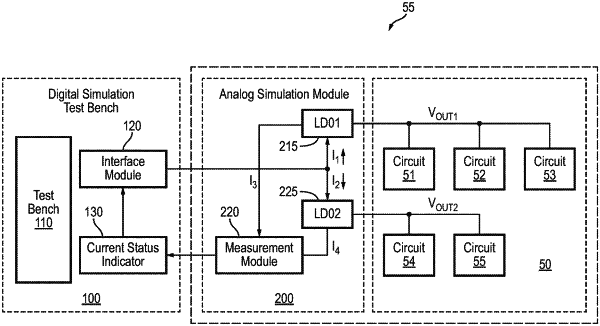| CPC G06F 30/367 (2020.01) [G06F 30/33 (2020.01); G06F 30/3308 (2020.01); G06F 30/3312 (2020.01); G06F 30/38 (2020.01)] | 10 Claims |

|
1. A computer-implemented method of testing a circuit design, the method comprising:
applying a test vector from a digital circuit simulator test bench stimulus to a digital simulation interface;
supplying a time varying first current signal from the digital simulation interface to an analog circuit simulator in response to the test vector the time-varying first current signal having a first value during a first point in time and a second value during a second point in time, the second value being different from the first value, the first point in time and the second point in time defining a first time interval, wherein the time-varying first current signal is representative of current loading characteristics of a first portion of the circuit design, wherein the first portion comprises digital circuits;
performing, by the analog circuit simulator, an analog simulation of a second portion of the circuit design using the time-varying first current signal;
measuring, by a measurement operation, a second current signal in response to the performed analog simulation of the circuit design;
supplying, by the measurement operation, the second current signal to a current status indicator via the digital simulation interface;
and causing the time-varying first current signal to change by the current status indicator, during a second time interval different from the first time interval, until the second current signal has a value that is equal to or less than a threshold value.
|